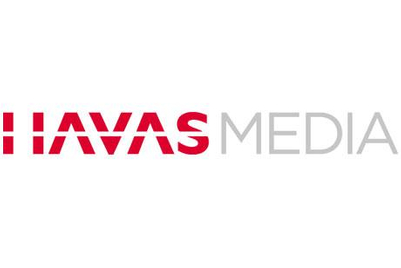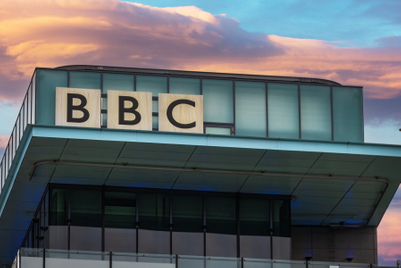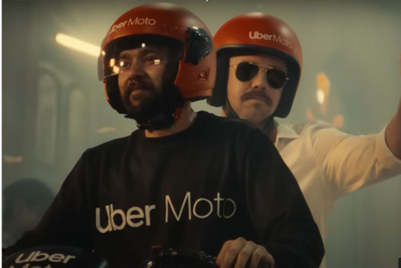Havas Media recently completed 10 years of operations in India. While things may have changed in the media space, the agency’s leadership hasn’t changed much with Anita Nayyar, CEO, India and South Asia, and Mohit Joshi, managing partner, Havas Media, having been there all along. In a freewheeling conversation with the duo, we learn that the focus on growth hasn't changed either.
Asked about the changing nature of the business, with data and numbers aplenty, Nayyar, doesn’t rule out the role of numbers, but says it’s important for the experienced planners to go with their gut. Reiterating that numbers are important, she adds that if one projects a piece of data for a population of 1.2 billion, there will be question marks.
She explains, “To my mind, the gut will always have a role. The percentage of it (the role of gut) is now different. Earlier it was all about the gut. Then, it changed to gut plus numbers. Now, everyone is pushing for numbers. But, I personally think that gut will always have a role to play. For those who are experienced and been in the industry it is easy for gut to tell you what works or doesn’t. There are clients who only believe in numbers and others who still believe in gut."
Edited excerpts from the interaction:
10 years. Growth to Rs 3,500 Cr in billings. And a mostly steady leadership team. Where does Havas Media want to be few years hence, say by 2020?
Anita Nayyar (AN): The plan is obviously growth and that goes without saying. Agencies like ours that have had to do in 10 years what others have done in 25 years. The multiples of growth are far higher than what the market is growing at. While we haven’t put a figure to what kind of billings we want to be at, we have grown at three to four times the rate the market has grown and that’s what we aim to do in the coming years as well.
Will that be possible given the base is larger now?
AN: We are on a decent base so to grow at three to four times the market is going to be tough. The market should close at about 10 to 11 per cent growth. It’s not as high as the 18 per cent that was predicted earlier in the year. I think we should at least grow at two to three times the market.
Along the journey from Rs 150 Cr and RB to where you are today, was scale an issue, especially earlier on?
AN: We have upwards of 100 clients (across digital and mobile businesses too). Scale has never been an issue. We believe more in smartness than in size.
Geographically, you have recently set up offices in Ludhiana and Kochi. Do you see the next wave of growth coming from beyond the metros?
Mohit Joshi (MJ): Yes, I think metros are more or less stagnated right now. The next wave of growth will come from the second and third tier towns where there are a lot of SMEs, local entrepreneurs and retailers. Today, they have a lot of money and are looking at media in a serious way. Localised media options help too. It’s moved on from only having print as an option. With digital, localisation is possible even more and hence the possibility of these clients spending on media is higher.
Could digital emerge as the highest contributor to media growth in these towns?
MJ: If the infrastructure issues that exist today aren’t a problem in the future, then mobile will be the highest contributor. And indeed these clients are willing to be on television too. We have a lot of clients showing interest on TV, these include local clients in Ludhiana (for example).
AN: In Ludhiana we are the first global agency to have an office in the city. While other agencies do service Ludhiana from a Delhi, we are the only MNC to be there. We are seeing a lot of client interest coming in from those markets.
There has been a lot of talk about e-Commerce spends going down. What is your take on that?
MJ: This year has been a year of consolidation for these e-commerce sites. We have seen a significant reduction in e-commerce spends this year, for our clients and in the industry as well. We are hopeful that next year will again be a year of spending. It might not be as much as it was last year, but should be more than this year. Interestingly, most of these e-commerce clients have a significant traction coming from the small towns. So having offices in these towns help those clients go local with initiatives and solutions.
There are reports of drawing in talent from diverse fields at media agencies. How has the experience been for Havas Media?
AN: We have been one of the earlier adapters of talent from diverse industries. We do have a lot of people from creative, marketing or tech backgrounds at the agency. The philosophy (at the agency) is very different. It originates from the fact that we are a meaningful agency. The mission is to make brands far more meaningful. You don’t need to necessarily do a print/TV/radio plan to make the brand more meaningful and we actually look at the OSEP (Owned, Share, Earned and Paid media) process.
What is the current headcount? How do you see this growing – in terms of numbers and composition?
AN: It’s 400-plus. We are looking at people from diverse back grounds too. Different talent brings a different perspective to the business.
What we are looking at is an integrated concept. The mandate across our office is for everyone in digital to get integrated with offline, and vice-versa. Our planners are 360-degree planners. That’s the way we are looking at integration in Havas and that’s happening globally too. We have to be future ready and are working towards that.
Mobile has been much talked about, but the absolute numbers are still small. How large is this for Havas?
AN: Mobext has three of them. While, India is the most penetrated market in terms of mobile after the US, I think what is restricting the growth of mobile from a marketing and advertising perspective is the infrastructure. So while Mobext has been there for almost three years now, we haven’t seen the dramatic growth in the area.
Mobile is in exactly at the stage, digital was a few years ago. Clients would get interested by it but when it came to putting the money, they weren’t willing.
Spends on mobile have grown. But clients are still worried about the infrastructure. Now with Jio coming in, we should see the situation after a cooling period of a few months.
With all the talk about digital, what will be the future of print, and other traditional media? (Forecasts still predict growth, except in case of magazines...)
MJ: What has already started is that a lot of duplication is happening with digital. I know a lot of people, including myself who have stopped reading the newspaper or magazine and are interacting with them in a digital format. But, these are also the things that you have grown up with. One won’t be able to do away without them immediately. I think print is here to stay at least for the next five to six years in a big way till each and every village in the country has an internet that is capable of delivering content. When that happens people will translate to a digital environment. But till that happens all our mediums will stay. When I plan (a campaign) in The Times of India today, I don’t plan it as a newspaper. I plan it as a content partner. It’s a newspaper, as well as online as well as the app that exists. The consumer is going to The Times of India and wherever it’s available the person will interact with it.
Other than very evolved clients, if a client has (say) a crore to spend, the first thing that every client today feels is that the eyeballs on television will be far higher. While people are convinced about digital, they’re not convinced about the infrastructure. They’re not sure about the right people being delivered the right communication. So, there is a bit of a question mark that still exists. Everyone is convinced about digital videos and clients are not questioning online videos as a supplement to TVCs. But, whether other forms of online engagement are the right things to do, there are questions that are still asked.
AN: It will be some time till the (client) inertia leaves. Like I’ve always said, India is slower in adoption of newer stuff, whether it is technology or mediums. Television plays a role in reach and efficiency, and it will be some time till we get onto being extremely digital. It is slowly gaining ground.
On content: publishers, media agencies, creative agencies, digital agencies and specialist content agencies are at play. Who is best equipped to handle branded content? Do you see Havas Media as a one-stop-service provider?
MJ: Whoever has the best content (is best equipped). Content is the king. There are instances where we as a media agency are creating the best creative for the client and they have gone with it.
AN: There have been cases of awards been won by media agencies that are content-led. There are two pillars that work in the media DNA – data and content. So, I think the thread that ties data and content today is insight.
MJ: Integrated agencies will work and eventually become the norm. You can’t have a different content agency and a different social agency, or a separate media agency. That model won’t continue for long. We have started collapsing it at Havas. We as media specialists should be in complete control of it. Nobody knows what the client wants more than the media agency. We are handling the brand. We collaborate with content creators or create content internally. The control of what gets created and what will be right for the brand should be with the media agency since they know the brand inside out. Which is why you have a content specialist with every agency. It’s about bringing the best together.
Havas Media was born from Euro RSCG. What is the nature of collaboration in the business today? How is Havas Media equipped for the 'Collab' era?
AN: We do have internal resources that work a lot on ideation. Then there’s a creative leg to work we do too.
While they’re not termed 'Collab' guys, the thinking guys we have in the team are a combination of ideation, creative and content. So, we do have a collab working representation too. When we go to clients with media ideas we do the whole piece.
MJ: It’s not necessary for us to have the (creative) mandate. As long as the creativity is ingrained in the process, that’s what is important.




.jpg&h=334&w=500&q=100&v=20250320&c=1)
.jpg&h=334&w=500&q=100&v=20250320&c=1)



.jpg&h=334&w=500&q=100&v=20250320&c=1)


.jpg&h=334&w=500&q=100&v=20250320&c=1)
.jpg&h=334&w=500&q=100&v=20250320&c=1)



.jpg&h=268&w=401&q=100&v=20250320&c=1)




